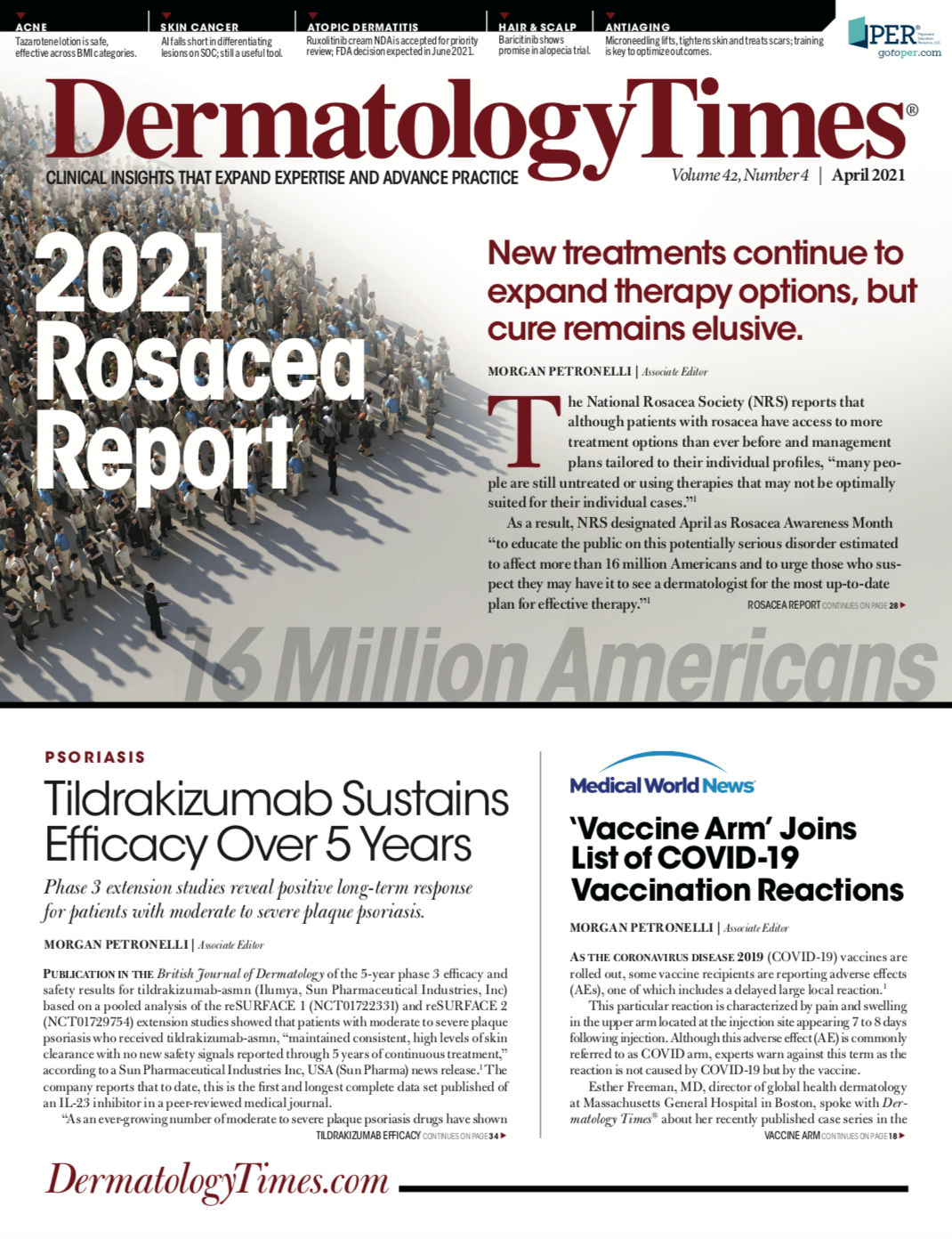- Case-Based Roundtable
- General Dermatology
- Eczema
- Chronic Hand Eczema
- Alopecia
- Aesthetics
- Vitiligo
- COVID-19
- Actinic Keratosis
- Precision Medicine and Biologics
- Rare Disease
- Wound Care
- Rosacea
- Psoriasis
- Psoriatic Arthritis
- Atopic Dermatitis
- Melasma
- NP and PA
- Skin Cancer
- Hidradenitis Suppurativa
- Drug Watch
- Pigmentary Disorders
- Acne
- Pediatric Dermatology
- Practice Management
- Prurigo Nodularis
- Buy-and-Bill
Publication
Article
Dermatology Times
Regenerative Medicine Gaining Popularity
Author(s):
Regenerative medicine is still in its infancy, but patient demand and ease of use are growing its popularity among dermatologists. However, regulatory issues raise concerns.
The evolving field of regenerative aesthetic medicine (RAM) is likely to become a growing part of dermatology practice, according to William P. Werschler, MD, FAAD, FAACS.
“In recent years, the amount of knowledge, types of procedures, and uptake of RAM have all increased and done so rapidly as growing general awareness of RAM has led practitioners to learn more about these procedures and then to try them,” he noted in his presentation at Maui Derm Live. The in-person dermatology continuing medical education (CME) conference in Hawaii was held concurrently with Maui Derm Connect, a virtual CME conference, in January.1
“Regenerative modalities will likely not replace our current rejuvenating procedures in most of our practice lifetimes, but I believe RAM will significantly impact what dermatologists do and how we do it within the next 5 years,” added Weschler, an assistant clinical professor at the University of Washington in Spokane, a founding member of Spokane Dermatology Clinic and Werschler Aesthetics, and a Dermatology Times® editorial advisory board member.
Werschler described RAM as a collection of disparate products, techniques, and procedures that have in common the use of autologous or allogenic biomaterials. As part of the portfolio of aesthetic medicine, RAM addresses patient demand for results that are more natural and longer lasting, he said.
“RAM represents the fifth column of aesthetic practice, after cosmetic surgery, energy devices, injectables, and medically directed skin care [cosmeceuticals],” Werschler said.
As it stands, RAM principally comprises procedures utilizing either platelet-rich plasma (PRP) and a host of related products or adipose-derived stem cells (ADSCs). However, exosomes are assuming a growing place in RAM, he noted. The leading areas in which RAM is being applied in dermatology include hair restoration, wound healing, scar reduction, and antiaging/rejuvenation procedures for improving skin laxity, texture, and tone.
Werschler explained that understanding the various RAM modalities comes down to 3 key concepts: cell type, growth factors, and tissue matrix. For example, PRP and its derivatives provide an array of growth factors and signaling proteins that activate cells and stimulate cell differentiation, growth, proliferation, and migration within a fibrin matrix.
“PRP is the gateway to initiating the healing cascade, and it accommodates a variety of aesthetic needs,” Werschler said. “It’s like a dermal filler that’s turbocharged.”
There is no standard protocol for preparing PRP, but the main principle is to increase the concentration of platelets in a blood sample to between 2 and 5 times the normal physiological value. The final material is then delivered to tissue via microneedling, direct injection, or other open direct applications. The PRP sample is sometimes also mixed with another material such as a dermal filler that will act as a matrix to maintain the PRP at the site of delivery.
Stem cells used in RAM are predominantly mesenchymal stem cells derived from fat that communicate via paracrine mechanisms using exosomes, which are extracellular vesicles that act as messengers. In addition, the bulge in hair follicles is a rich source for epithelial and melanocytic stem cells.
The popularity of ADSCs is explained by their abundance in fat and by the relative ease with which fat can be obtained. Nevertheless, clinicians need to pay attention to the techniques used for fat harvesting, fat processing/sizing, and subsequent reinjection to generate the most optimal results.
“Variability in the performance of these steps probably explains the variability in results achieved,” Werschler said. “There is no single best way yet determined to perform ADSC therapy. Different practitioners have different techniques and subsequently different outcomes. Over time, there will be further standardization of techniques either through rigorous investigation and clinical trials or through mandated regulatory oversight.”
Disclosure:
Werschler is a consultant or independent contractor for AbbVie, Suneva Medical, Inc, and Ultherapy. He receives grants or research support from Allergan, Amgen, Boehringer Ingelheim, DermAvance, Galderma, Genentech, Janssen Pharmaceutical Companies of Johnson & Johnson, Kythera Biopharmaceuticals, Pfizer Inc, Suneva Medical, Inc, and Ultherapy. He has received honoraria from AbbVie, Allergan, Celgene Corporation, continuED Medical LLC, Leo, Merz Therapeutics, Prescriber’s Choice, and Sunev. He is a speaker for AbbVie, Allergan, Celgene Corporation, Aclaris Therapeutics, Leo, Merz Therapeutics, Prescriber’s Choice, Pfizer Inc, Ultherapy, and Xoft.
Reference:
1. Werschler W. Hot topic: regeneration will replace rejuvenation 2021- the science behind regeneration. Presented at: Maui Derm Live In-Person Dermatology CME Conference and Maui Derm Connect Virtual Dermatology CME Conference; January 25-29, 2021; Maui, Hawaii; virtual.






